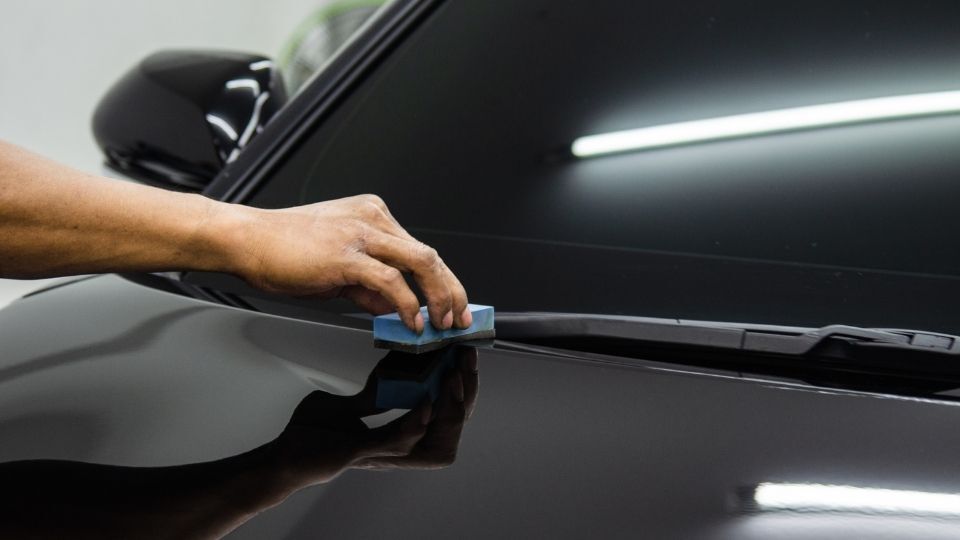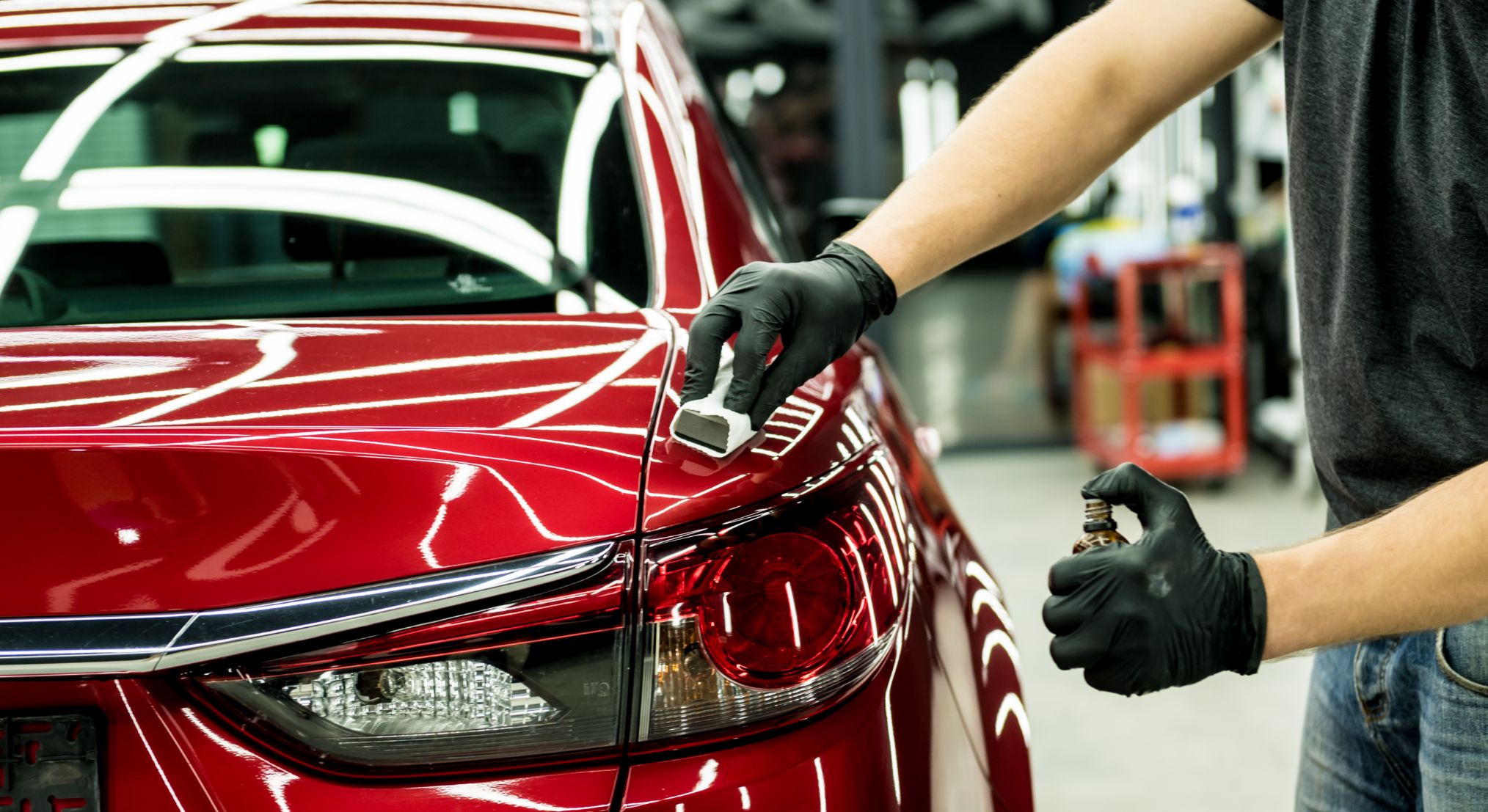Top Benefits of Ceramic Coating for Long-Lasting Car Care
Top Benefits of Ceramic Coating for Long-Lasting Car Care
Blog Article
Ceramic Finishing vs. Traditional Wax: Which Supplies Much Better Long-Term Security?
The argument between ceramic coatings and conventional wax for automobile protection has actually gathered significant focus amongst automobile fanatics and experts alike. Ceramic coverings flaunt remarkable longevity and resistance to ecological elements, yet the intricacy of their application increases questions concerning availability and practicality.
Review of Ceramic Finish
Ceramic covering has actually acquired substantial popularity amongst automobile fanatics and detailers alike because of its advanced safety qualities. This cutting-edge innovation is designed to develop a resilient, hydrophobic guard over an automobile's paint surface, significantly boosting its resistance to ecological contaminants such as dirt, UV rays, and chemical stains. Unlike typical wax, which supplies a temporary layer of security, ceramic coverings bond at a molecular degree with the paint, supplying long-lasting toughness-- often extending past 2 years with correct maintenance.
The application process includes careful prep work of the vehicle's surface, including cleansing and brightening to ensure ideal bond. As soon as used, the coating cures to develop a durable layer that not just includes deepness and gloss to the paint yet additionally simplifies maintenance. With its hydrophobic residential or commercial properties, ceramic finishing enables water and dust to glide off even more conveniently, lowering the regularity of cleans and reducing the risk of swirl marks.
Additionally, ceramic finishes are offered in different formulas, allowing users to select items customized to their details demands and choices. Generally, ceramic finishing represents a significant improvement in paint security technology, delivering superior efficiency compared to conventional alternatives.
Review of Conventional Wax
Generally regarded as a staple in automotive treatment, wax works as a popular choice for those seeking an uncomplicated technique to boost and shield their automobile's paint - ceramic coating. Automotive wax usually consists of all-natural ingredients, such as carnauba, or artificial substances, created to produce a safety layer externally of the paint. This layer not just enhances the car's gloss and shine but also provides an obstacle against ecological impurities
The application of wax is typically easy to use, making it easily accessible for both specialists and DIY enthusiasts. Once applied, wax calls for a treating period, after which it sets to create a safety shell.
However, while wax is efficient for enhancing the visual charm of a car, it is necessary to note that the protection it uses might require more regular reapplication compared to different items, such as ceramic coverings. In general, conventional wax stays a favored alternative for those focusing on simplicity of usage and instant visual renovation.
Longevity and Long Life Comparison
While both ceramic layers and typical wax deal protective benefits for automotive paint, their longevity and long life differ dramatically. Standard wax, normally made from natural carnauba or artificial polymers, normally gives a protective layer that lasts approximately 3 to 6 months. This reasonably brief life expectancy demands regular reapplication to preserve optimum protection.
In contrast, ceramic coatings are engineered from sophisticated nanotechnology, developing a covalent bond with the paint surface. This leads to a durable, hydrophobic layer that can sustain for two to five years, relying on the product and ecological problems. The remarkable toughness of ceramic layers is connected to their chemical structure, which offers boosted resistance to scratches, UV rays, and oxidation.

Protection Versus Ecological Elements
Securing an automobile's paint from environmental factors is critical for keeping its appearance and worth in time. Automobiles are continuously exposed to a range of elements, consisting of UV rays, bird droppings, tree sap, acid rainfall, and road crud, every one of which can endanger the stability of the paintwork.
Ceramic coatings give a robust defense versus these environmental assailants. Unlike typical wax, which can deteriorate rapidly under UV exposure, ceramic finishes create a resilient, hydrophobic layer that stands up to the damaging effects of sunshine and ecological contaminants. This advanced innovation produces a chemical bond with the car's surface area, providing exceptional defense that lasts for many years, also in harsh conditions.
Conventional wax, while less complicated to use, normally needs frequent reapplication and provides limited resistance to impurities and UV rays. Over time, it can break down, leaving the paint prone to scrapes and oxidation. On the other hand, ceramic coverings maintain their protective high qualities longer, substantially decreasing the threat of paint damages and making certain that the automobile keeps its visual allure. Because of this, ceramic layers are significantly recognized as the remarkable option for long-term protection versus environmental aspects.
Application and Maintenance Differences
The approaches of application and succeeding maintenance for ceramic coverings and typical wax vary significantly, affecting the overall customer experience and performance of each item. Ceramic coverings require a more complex application process, normally involving surface area prep work that consists of washing, decontaminating, and polishing the automobile. When the surface area prepares, the ceramic coating is used in a regulated setting, usually needing professional know-how to ensure correct healing and bonding to the paint.

While both items enhance car appearance, the longer-lasting protection offered by ceramic finishings may validate their first investment, in spite of the more demanding application process. Conversely, typical wax stays a preferred choice for those looking for an easier, albeit temporary, service.

Final Thought
Finally, ceramic finishes show significant advantages over traditional wax in terms of sturdiness and environmental management. With a lifespan expanding 2 to 5 years and remarkable resistance to UV rays, dirt, and chemical discolorations, ceramic finishes use a much more effective best site solution for long-term car upkeep. Although the application process might call for expert experience, the resulting cost savings and decreased frequency of reapplication emphasize the value of ceramic coverings for those looking for ideal car protection.
The discussion between ceramic read this post here coverings and traditional wax for lorry security has actually gathered significant interest among vehicle enthusiasts and specialists alike. Unlike conventional wax, which provides a short-lived layer of security, ceramic coatings bond at a molecular level with the paint, offering resilient resilience-- usually prolonging past two years with correct maintenance.
While both ceramic layers and conventional wax deal safety benefits for automotive paint, their longevity and durability differ significantly. For vehicle enthusiasts looking for long-term defense, ceramic finishings present an engaging advantage over typical wax items.
In final thought, ceramic coverings show considerable advantages over traditional wax in terms of resilience and ecological security.
Report this page